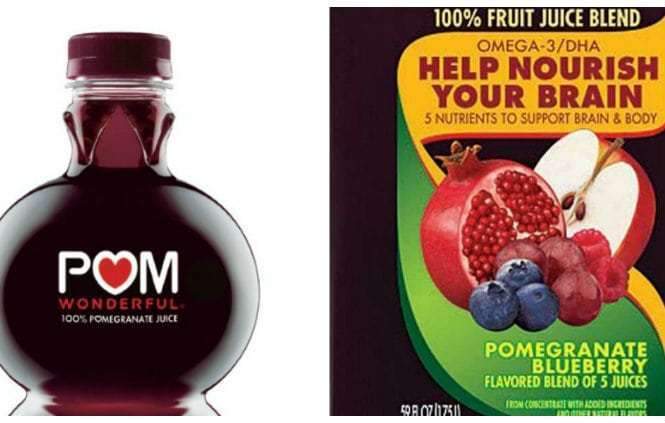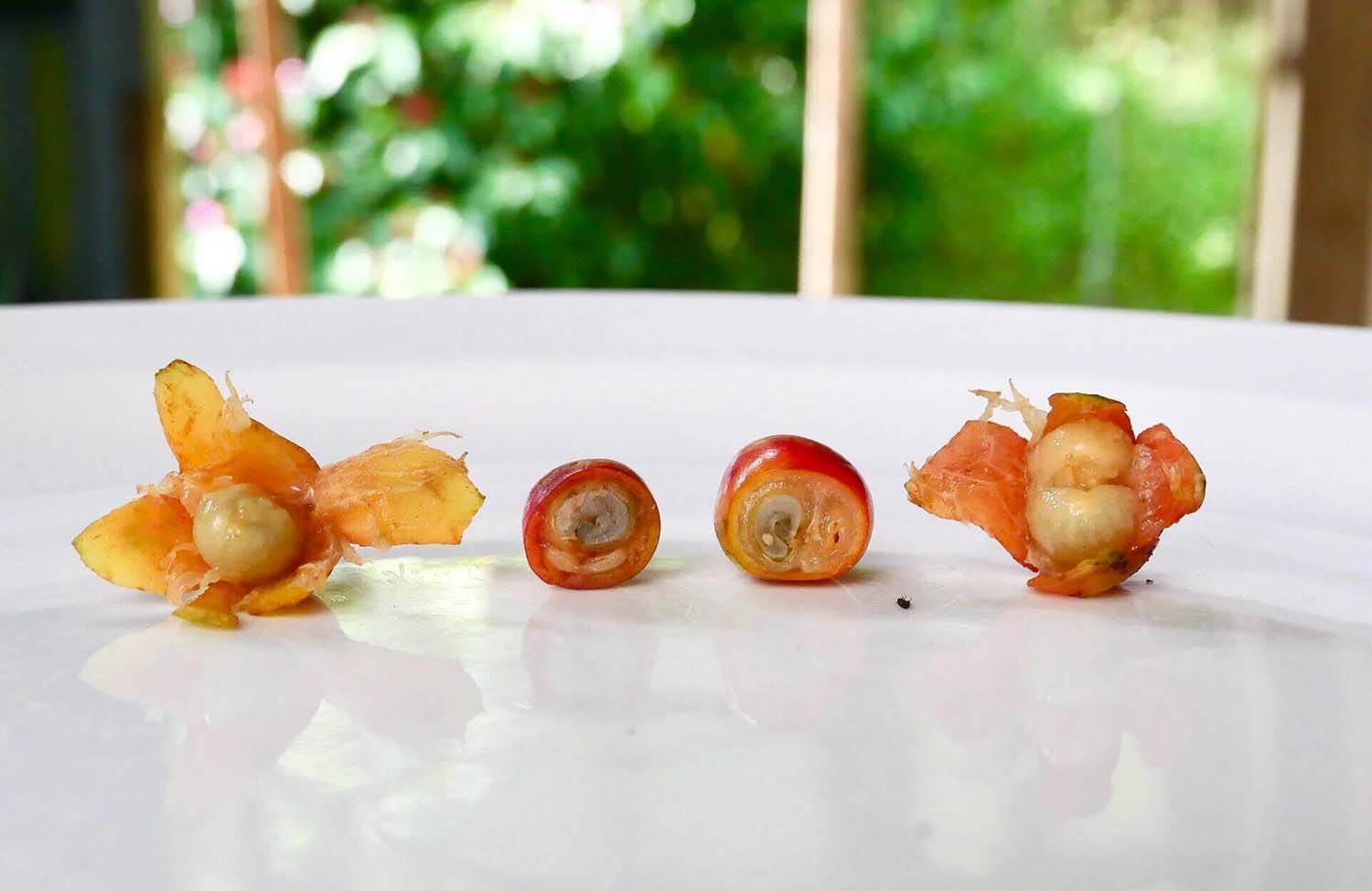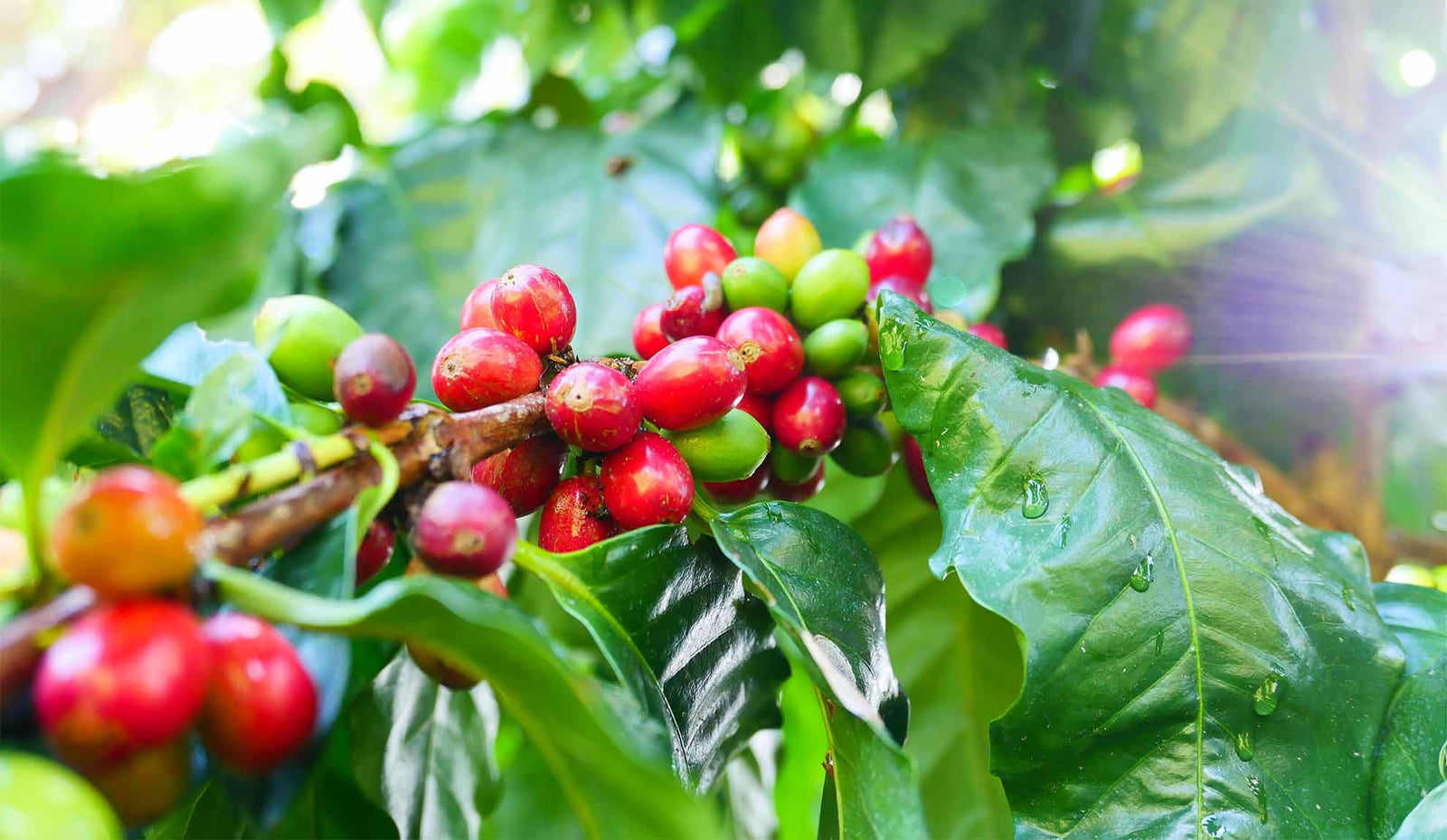I won’t mince words. This issue of Hawaiian coffee blends is about Hawaii’s overall image and brand, specifically as it relates to coffee. The question is, under what circumstances will Hawai’i allow the use of its name and branding power on a bag of coffee?
Only if the bag contains 100% Hawaiian coffee?
If the bag contains a blend, what’s the minimum amount required to use the name “Hawai’i”, “Kona”, “Ka’u”, etc.?
This might seem like a ridiculous amount of hair-splitting. But it matters.
What matters most, in my view, is how we label our coffee. According to Hawai’i law, the identity statement -- i.e. “Kona”, “Ka’u”, “Maui”, “Hawai’i”, etc. -- must be preceded by the percent (by weight) and followed by the term “Coffee Blend”. For example:
10% KONA COFFEE BLEND
To me, this is really a straight-forward presentation. But I’m also very familiar with coffee and marketing. What do you think? Is it possible people get confused or misled into thinking it’s 100% Kona? Sure. Is it likely? I don’t know. People surprise me with how they can simultaneously be aware and oblivious at the same time. Like being drawn to the brand cachet of Kona yet completely ignorant of everything else surrounding the name. It doesn’t make sense.
Honesty, I fail to see why it’s necessary to clarify the description further. I’m a skeptic consumer. I spend a lot of time reading labels and ingredients. And I particularly despise gimmicky language. So seeing a 10% Kona coffee blend just makes me think, “Oh, please. That’s cheap marketing.” And I don’t ever consider buying it. I want the real thing! Whatever that may be. But I realize I’m just one person, which isn’t a very good sample size.
Do I think such labeling should be illegal? It’s difficult for me to determine because I’m a vigilant consumer. I put the responsibility on myself to know what I’m getting into. If there’s not enough information available for me to be satisfied, I just don’t buy it. Or, if I do, I’m aware of the risk.
But I think a refinement of the labeling requirements makes sense. If a label tells you it’s 10% of one thing, it begs the question of what the other 90% contains. I’m also a bit of a purist, so, unless I’m making a conscious decision otherwise (i.e. gummy strawberries), I want something to be what it says it is.
Look at chocolate, for example. There are all kinds of classifications and regulations for using specific terms related to chocolate products, including minimum amounts of cacao solids, cocoa liqueur, fats, etc. And you can’t even call something “chocolate” if it contains certain ingredients, like vegetable oils. You have to label it, “made with chocolate”.
My favorite example of deceptive labeling is the 2014 case of POM Wonderful LLC v. Coca-Cola Co. POM, a company that sells 100% pomegranate juice drinks, successfully sued Coca-Cola for competitive damages on the basis of false advertising. Coca-Cola’s “Pomegranate Blueberry Flavored Blend of 5 Juices” contained only 0.3% pomegranate juice which, POM claimed, misled consumers into thinking they were buying the real thing, stealing customers and potential profits from POM. The Supreme Court ruled in their favor, 8 - 0. I think that’s terrific.
Should we (Hawai’i) allow the use of our branded terms on products that only contain a minority of Hawai'i-grown ingredients? Aye, there’s the rub. That’s precisely where protecting and building brand equity comes into play. Sure, there’s 100% coffee in that bag. So why is it significant to tell people it contains 10% of a Hawaiian product? Simple: because Hawai’i has value. Is it fair, is it right, to allow this practice?
Let’s look at some more labeling examples. As you saw in the previous label sample, using a Hawaiian brand name requires the disclosure of the percentage (at least 10%) and the term “coffee blend”. This seems pretty good but I’ll tell you what drives me a bit nuts: if the manufacturer chooses to disclose the other origins of the blend on the front label or merely state the fact that there’s 90% foreign coffee, BY LAW it must be in a font size that is, at most, HALF of the identity statement and below it. Like this:
10% KONA COFFEE BLEND
90% FOREIGN COFFEE
Is it just me or is this ludicrous? This type of labeling law fails my logic test. Why is it mandated that the majority of ingredients be no more than half the font size of the minority? I’ll tell you why: because the people that helped write these laws are the same people that operate the largest blending companies in the state. That’s not conspiracy bullshit either. However, it’s worth noting the fact that at least one of these companies also sells the most 100% Kona coffee in the world. Hmmm… interesting dynamic, right?
To understand the process of lawmaking, let me give you an intimate insider’s view of how the coffee industry collaborates with the state. The Hawai’i Coffee Association represents the majority of coffee stakeholders in Hawai’i -- producers, processors, brokers, wholesalers, and retailers. Most people involved with Hawaiian coffee are members of the HCA (or one of its affiliates, like the Maui Coffee Association). It’s not only fair but statistically true to assert the HCA is the voice of the industry. Back in 2001/2, the HCA Board of Directors lobbied the Hawai’i Dept. of Agriculture and legislators to create the labeling laws (summarized in PART 1) after counterfeit coffee damaged the industry. I don’t dispute the good intentions of these laws and the fact that representatives of Hawaiian coffee approved motions to move forward with such rules to be made. But, while not suspicious, it's very convenient that the laws are drafted so tactfully to the benefit of the largest roasting companies’ business model.
Each year, the 100-percenters -- NOT members of the HCA -- lobby legislators to change the current labeling laws and increase the minimum content of Hawaiian coffee required to use branded names. Here’s an example of what they want:
51% KONA COFFEE
19% COLOMBIAN COFFEE
15% BRAZILIAN COFFEE
15% CAMBODIAN COFFEE
You’ll notice two things:
(1) the amount of Hawaii-grown coffee increased
(2) all other origins are disclosed, along with their exact percentage, in a font size at least half that of the identity statement
Regarding (1), two alternative minimums have been proposed, 51% and 80%. These pass most peoples’ logic test. If you’re going to call something by its name, you better have a majority of it present, at the very least. What do you think?
Regarding (2), this is why such bills fail to pass in the House and Senate. Blending coffee is part of the culture and tradition of coffee. I have no problem with it. In fact, many great coffee experiences arise from combining origins and varieties. But because coffee is a seasonal product and supply fluctuates dramatically year-to-year, it’s horribly inconvenient to make roasters state exact percentages on the labels. It’s a packaging and labeling nightmare, especially if you have blends comprising of microlots. Plainly stated, it costs the company’s time, money and wasted packaging to impose such strict standards. Most importantly, it’s unnecessary for the desired effect of truth in labeling.
(I should mention that referring to this contingent as 100-percenters in this context seems inappropriate. However, it’s my suspicion that the 51% and 80% are ploys to appear negotiable. Part (2) of their stipulations effectively makes blending such a pain in the ass as to discourage it altogether. Thus, the long play of this strategy still looks to harbor a 100% scenario, in my view.)
Personally, I think if the labels are more explicit and require that the identity statement be smaller than the rest of the contents, consumers will be more clearly informed and the Hawai’i brand better maintained. Here’s what I’d like to see:
90% FOREIGN COFFEE
10% KONA COFFEE
Clear, simple, easy to understand, and with full disclosure. All of the ingredients are listed, the majority of which should be listed first, ideally in a larger font. What do you think? I think it’s fair to use Hawaii’s branded terms appropriate to their context. What I mean by that is very simple: 10% Kona, or whatever, isn’t enough of a Hawaii-grown product to fairly use it for advertising prominence. By all means, use the branded terms for their value. Tell people that Hawaii-grown ingredients are in your products. But that feature shouldn’t be the primary selling point if those ingredients are the minority.
Now let’s take a step back for a minute and consider all of this in light of the market for 100% Hawaiian coffee. If you want an authentic experience of Hawaiian coffee, will you look to a 10% blend to satisfy that desire? Will the existence of such products diminish the perceived value of 100% Hawaiian coffee? Does the quality of a 10% blend reflect the quality of 100% Hawaiian coffee?
I have a hard time believing it does or could. This, for me, is often where the 100-percenter’s argument breaks down. 10% doesn’t pass my logic test. I don’t care what it is. If a product is only 10% of something I want to experience that’s special, unique or otherwise valuable to me, it’s a joke. I’m not a sucker. But other people are. I think people have a responsibility to not be suckers. And I don’t think 10% Hawaiian coffee blends breed gullible consumers. What do you think?
Ultimately, the 100% market and the 10% market are comprised of vastly different buyers. Sure, there’s bound to be some cross over. However, people buying 10% Hawaiian coffee mostly purchase with price as their priority, not the desire to have an authentic Hawaiian coffee experience. They just want to trick themselves into thinking they are. I don’t judge them for it. It happens for the same reason Rolex and Louis Vuitton knock-offs actually sell. People just want to feel a certain way by buying something.
Does this tarnish the reputation of the real thing? I’m not a marketing expert, so I have no clue. What I can assert with some degree of certainty, however, is that poor quality 100% Hawaiian coffee absolutely damages Hawaii’s brand. So the issue, for me, is really about quality control of 100% Hawaiian coffees. Sure, it’s a bit sleazy that companies can reap the benefits of Hawaii’s brand and reputation of high quality without adding to it. I wish people looked at 10% blends the same way I do and feel their intelligence insulted. More often than not they don’t, which tells me that the majority of Hawaiian coffee buyers aren’t too discerning. Ultimately, I think people want to buy and support Hawaiian coffee in the only way they think they can afford to.
This leads to another insider’s perspective I want to share with you: 100% Hawaiian coffee is damn hard to sell. And 10% blends do, in fact, put a lot of Hawaiian coffee in the market at a much more affordable price. Believe me, I wish nothing more than to see the demand for 100% Hawaiian coffee outstrip supply. But competing in a global market doesn’t make this the case.
“$40 a pound?!” you say. “You must be making a killing!”
No. I'm making a living.
Hawai’i just plain cannot sell all of its four million or so pounds solely to the 100% market every year. We haven’t been able to do it yet, which is partly why 10% blends are appealing to buyers AND producers. But that doesn’t mean we can’t.
THE REAL PROBLEM
... is that we’re wasting time, energy and resources AND diminishing our coffee brand by fighting with each other. The Hawai’i coffee community is small. Being divided weakens us. We don’t present ourselves as strong and unified, innovative and capable, with the vast resources we have and could have compared to many coffee producing countries.
The worst part is that there’s a real counterfeit enemy: everywhere outside of Hawai’i. The debate is only hashing out internal laws while we and consumers remain prey to fraud internationally and on the mainland. A coffee roaster in Florida can put Guatemalan beans in a bag labeled “Kona Coffee” and there isn’t a single law protecting you or us. That’s our problem.
We need to come together as an industry and focus on protecting Hawai’i outside of Hawai’i by way of national and international trademarks. But there are struggles with this process. Who owns the trademark? Who pays for it? The Hawai’i Dept. of Agriculture only receives 0.5% of the state’s budget. And Hawaiian coffee, while recognized, only accounts for about 2% of the state’s economy. We’re little fish with a small, underfunded mechanism of protection. This strategy will likely take years and a good amount of money to really get anywhere, lobbying at the federal level, attorney fees, etc. Furthermore, even with laws in place, what’s the mechanism of enforcement? Who’s to oversee that everything is legitimate?
I could go on and on. There is easily a whole season’s worth of episodes if we made this into a TV show. And that’s just one part of the Hawaiian coffee saga. So much drama it’s almost shameful.
THE ONLY SOLUTION
It’s the familiar “chicken or the egg?” scenario: Hawai’i will sell more 100% Hawaiian coffee if that’s what people want and are willing to pay for. But it’s up to us as farmers, roasters, and retailers to provide 100% that’s worth buying and supporting. Both the supply chain and the market participate in shaping one another.
The only solution, err, the only truth in this scenario is the answer to this question: What do you want that you are willing to pay for?
In the short term, in the day-to-day, we can all make a difference by focusing on putting the highest quality 100% Hawaiian coffee directly in the hands of people that want it. I know -- how cliché, right? Maybe. But that doesn’t make the approach less true or effective.
Our mission, our promise to you as Big Island Coffee Roasters, is to produce, procure, and provide the best Hawaiian coffees we can find. That’s our accepted responsibility.
You are not obligated to be any part of this. But nobody is going to ask the hard questions for you. And the answers are right in front of you.




